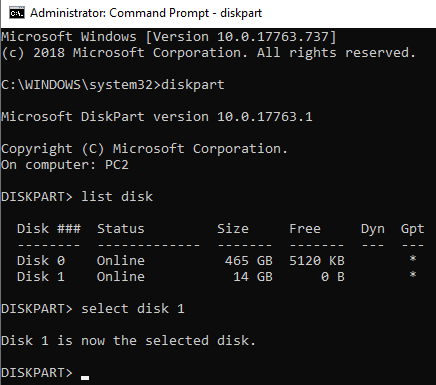
After that, the volume will be overwritten count times using a different random number each time. This option is not valid with the /F option. These two options together provide an alternative method of specifying the size of the disk that is being formatted. When possible, use the /F command-line option instead of /N. Specifies the number of sectors per track. These options together provide an alternative method of specifying the size of the disk that is being formatted. If you use the /T option, you must also use the /N option. When possible, use the /F command-line option instead. Specifies the number of tracks on the disk.
FORMAT DISK WINDOWS 10 CMD KEYGEN

Windows accepts the following values for size: When possible, use this command-line option instead of the /T and /T command-line options. Specifies the size of the floppy disk to format. You should use the /Q command-line option to format only previously formatted volumes that you know are in good condition. Deletes the file table and the root directory of a previously formatted volume, but does not perform a sector-by-sector scan for bad areas. Also 128K and 256K for a sector size greater than 512 bytes. The following list presents valid values for each type of file system unit size: Default settings are strongly recommended for general use. If you don't specify unit size, it's chosen based on volume size. Specifies the allocation unit size to use on FAT, FAT32, NTFS, exFAT, or ReFS volumes. If you use a single format command to format more than one disk, all of the disks will be given the same volume label. Use the syntax /V: to prevent the prompt for a volume label. If you omit the /V command-line option or use it without specifying a volume label, format prompts you for the volume label after the formatting is complete. Specifies the type of file system (FAT, FAT32, NTFS, exFAT, ReFS, or UDF). If you do not specify any of the following command-line options, format uses the volume type to determine the default format for the disk. Specifies the mount point, volume name, or drive letter (followed by a colon) of the drive that you want to format. Syntax format volume ] įormat volume įormat volume For more information about the recovery console, see Windows Recovery Environment (Windows RE). You can also use the format command, with different parameters, from the Recovery Console.


 0 kommentar(er)
0 kommentar(er)
